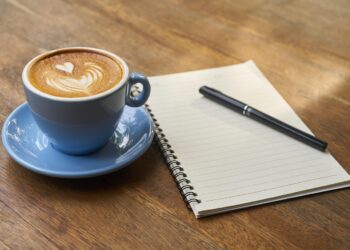From Bean to Bliss: Discovering the Joys of Your First Coffee Cup
The journey from a humble coffee bean to a delightful cup of java is as intriguing as it is aromatic. In this comprehensive guide, we’ll explore every facet of coffee—from its historical origins to the brewing techniques that enhance its flavor. Whether you are a novice brewer or a seasoned coffee enthusiast, this article will enrich your appreciation and understanding of coffee, guiding you through the rituals that culminate in the creation of the perfect first cup of coffee.
The Rich History of Coffee
Coffee’s origins can be traced back centuries to the ancient coffee forests on the Ethiopian plateau, where legend says the goat herder Kaldi first discovered the potential of these beloved beans. The journey spans across continents, from the Middle-East where it became part of the Ottoman Empire’s rituals, to the cafe culture of Europe, shaping civilizations and social practices. Understanding this rich history adds a layer of appreciation to each sip.
Types of Coffee Beans
There are several types of coffee beans, each with unique characteristics and flavor profiles. The most commonly cultivated beans include:
- Arabica: Known for its smooth, complex flavor profiles, Arabica beans are popular among specialty coffee makers.
- Robusta: With a stronger, more robust flavor and a higher caffeine content, Robusta beans are often used in espresso blends.
Exploring different types of beans is essential to discovering your personal coffee preferences.
Selecting Your Coffee Roast
The roast level of coffee beans significantly affects the taste of your coffee. Ranging from light to dark, each level brings out different notes and strengths:
- Light Roast: Usually has a sharp acidity and retains most of the original coffee characteristics.
- Medium Roast: Offers a more balanced flavor and aroma, bringing out sweet, caramel notes.
- Dark Roast: Known for its bold, smoky flavors, darker roasts generally have less caffeine.
Choosing the right roast can enhance your coffee experience, tailored to your flavor preferences and the time of day you enjoy your brew.
Mastering Coffee Brewing Techniques
To extract the essence of the coffee bean, various brewing methods can be employed, each offering different aspects of the bean’s character. Here are some popular techniques:
- Pour Over: Ideal for highlighting intricate flavor nuances in high-quality beans.
- French Press: Provides a rich, robust cup and is quite straightforward to use.
- Espresso: An intense, concentrated method perfect for those who appreciate a deeper flavor profile and crema.
- Cold Brew: Known for its smooth, mild taste and lower acidity, perfect for hot summer days.
Experimenting with different methods can lead to discovering your preferred coffee texture and temperature.
Accessories That Enhance Coffee Experience
Enhancing your coffee brewing skills involves not just technique but also the right equipment. From grinders to kettles, each tool plays an essential role:
- Grinder: A quality grinder will ensure your coffee grounds are of consistent size, directly influencing flavor extraction.
- Scale: For precise brewing, a scale helps you use the exact amount of coffee required, avoiding waste and ensuring consistent strength.
- Kettle: A gooseneck kettle offers more control over the pour, crucial for methods like pour-over.
Investing in the proper accessories can significantly impact the quality of your coffee and simplify your brewing process.
Enjoying Your First Cup
The final and perhaps most enjoyable part of the coffee-making process is savoring the first sip of freshly brewed coffee. Here are a few tips to truly enjoy this moment:
- Sip Slowly: Appreciate the range of flavors and the warmth of the beverage.
- Note the Flavors: Try identifying different notes and flavors in each sip, building your coffee-tasting palate.
Drinking coffee can be a soothing ritual or a pleasant social activity, hence taking the time to appreciate it fully heightens the experience immensely.
Common Questions About Brewing Coffee at Home
There are often numerous questions newcomers might have about making coffee that is worth addressing:
- What is the best water to coffee ratio? Generally, a ratio of 1:15 coffee to water is a good starting point, which can be adjusted to taste.
- How important is the water temperature? The ideal brewing temperature is between 195°F to 205°F. Too hot water can extract undesired bitterness.
- Can I reuse coffee grounds? Reusing coffee grounds is not recommended as most desirable flavors are extracted during the first brew.
In conclusion, crafting the perfect cup of coffee is an art that requires patience, practice, and a passion for learning. From selecting the right beans and roast to mastering brewing techniques and utilizing proper equipment, each step influences the final product. By understanding these elements, even those new to the coffee world can enhance their daily ritual and discover the true joys of a freshly brewed cup of coffee.





